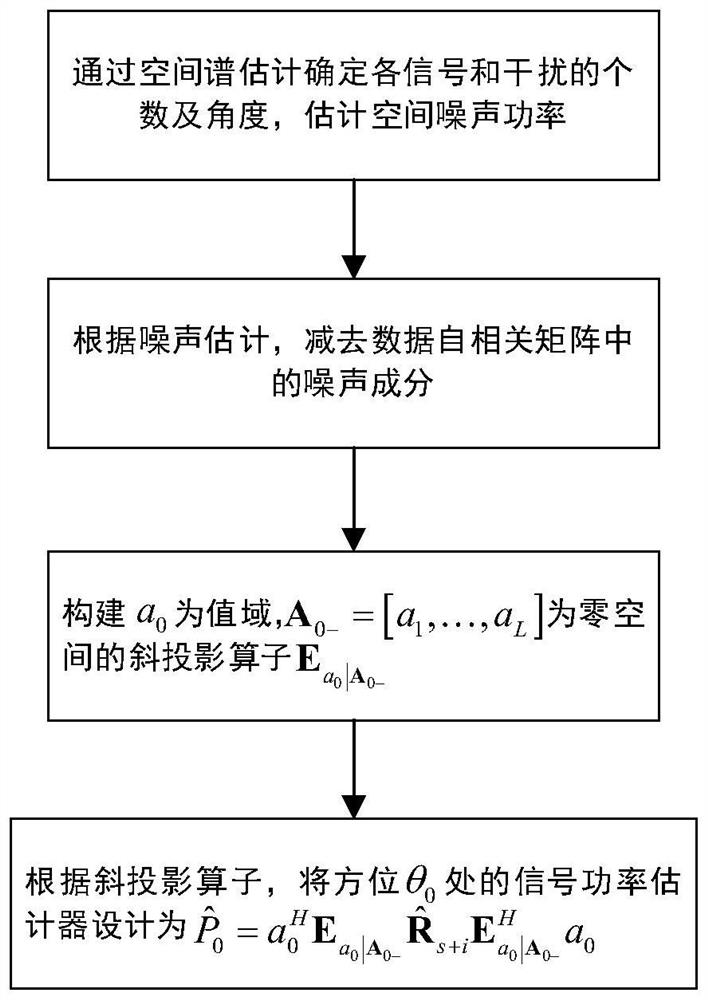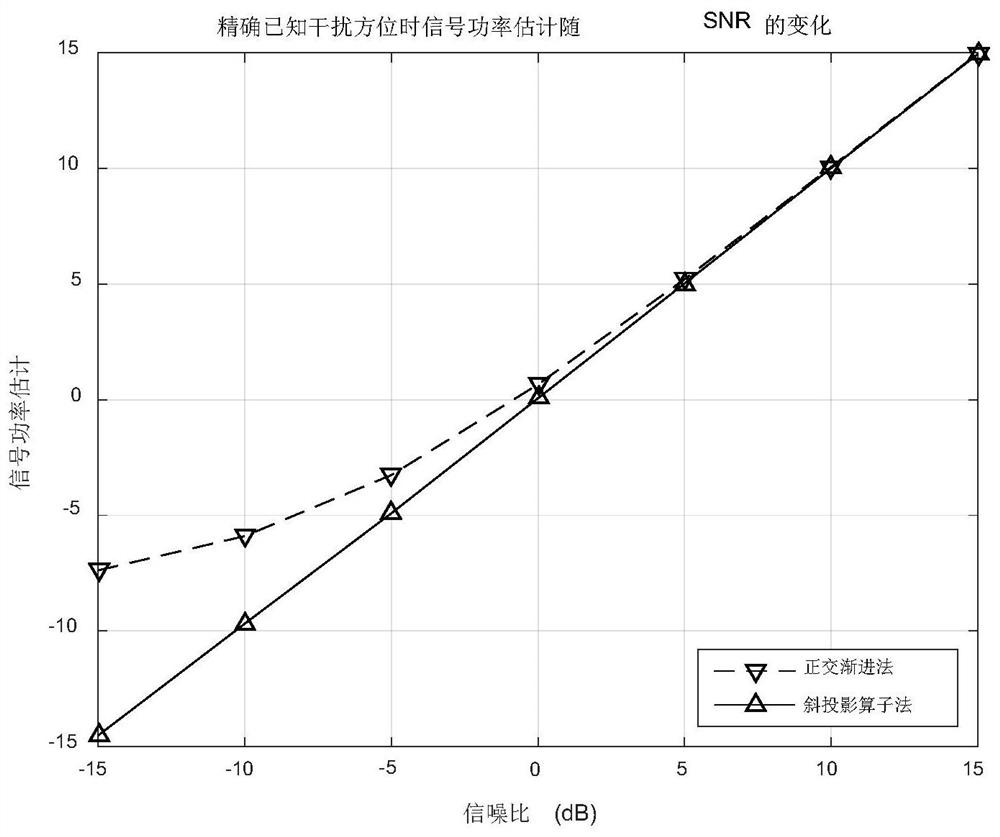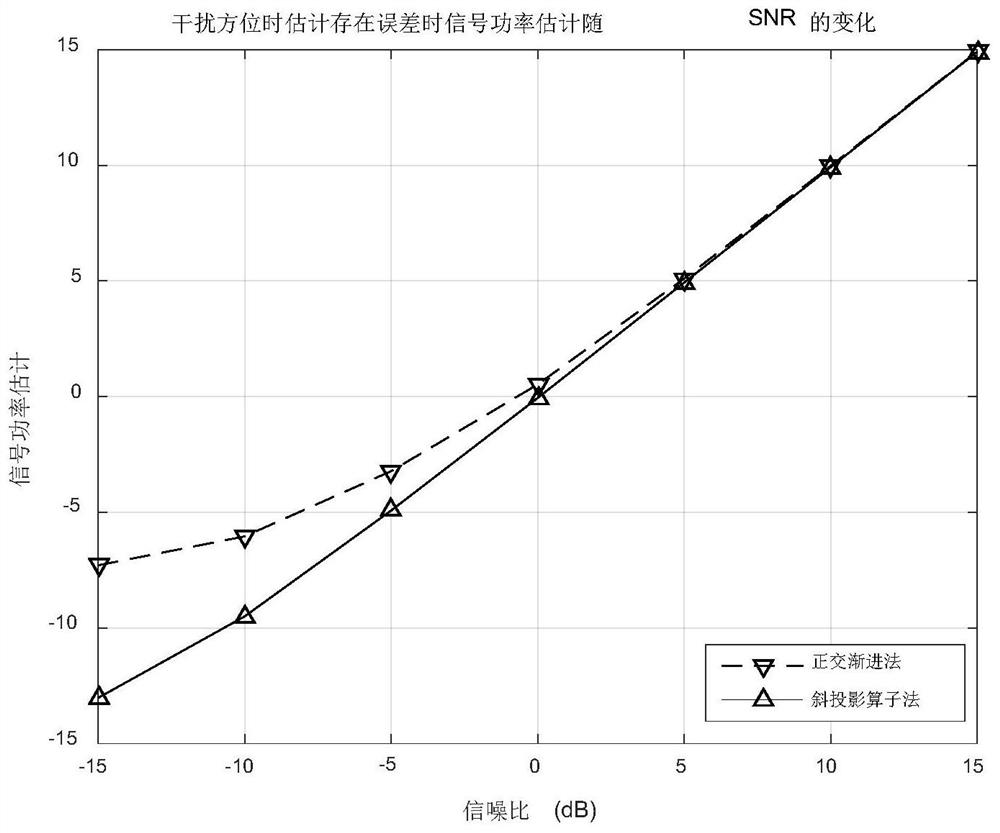A Signal Power Estimation Method Based on Oblique Projection Operator
A technology of oblique projection operator and signal power, which is applied in the field of signal processing, can solve problems such as inaccurate signal power, weight design deviation, and influence on estimation results, etc., and achieve the effect of reducing calculation amount and accurate signal power estimation
- Summary
- Abstract
- Description
- Claims
- Application Information
AI Technical Summary
Problems solved by technology
Method used
Image
Examples
Embodiment 1
[0031] The purpose of this embodiment is to compare different signal power estimation methods in different signal-to-noise ratio scenarios, and to verify that the inventive method can achieve accurate signal power estimation. In this embodiment, the number of snapshots is 200, the signal power is estimated by the steering vector orthogonal approximation method and the signal power estimation method based on oblique projection, and 200 experiments are repeated for each signal-to-noise ratio.
[0032] The implementation method of signal power estimation in the embodiment is as attached figure 1 shown. It is known that there are three interferences located at -35, 40, and 70 degrees after high-resolution spatial spectrum estimation, and the interference-to-noise ratio generated by the simulation is 10dB, the signal is located at 0 degrees, and the signal-to-noise ratio ranges from -15dB to 15dB and is expressed as 5dB is the step size. In the experiment, a uniform linear array ...
Embodiment 2
[0034] The purpose of this embodiment is to compare different signal power estimation methods in different signal-to-noise ratio scenarios when there is a deviation in the interference azimuth estimation, and to verify that the inventive method can achieve accurate signal power estimation. In this embodiment, the number of snapshots is 200, the signal power is estimated by the steering vector orthogonal approximation method and the signal power estimation method based on oblique projection, and 200 experiments are repeated for each signal-to-noise ratio.
[0035] The implementation method of signal power estimation in the embodiment is as attached figure 1 shown. It is known that there are three interferences located at -35, 40 and 70 degrees after the low-resolution spatial spectrum estimation, and the interference-to-noise ratio generated by the simulation is 10dB, the signal is located at 0 degrees, and the signal-to-noise ratio ranges from -15dB to 15dB with 5dB is the st...
PUM
 Login to View More
Login to View More Abstract
Description
Claims
Application Information
 Login to View More
Login to View More - R&D
- Intellectual Property
- Life Sciences
- Materials
- Tech Scout
- Unparalleled Data Quality
- Higher Quality Content
- 60% Fewer Hallucinations
Browse by: Latest US Patents, China's latest patents, Technical Efficacy Thesaurus, Application Domain, Technology Topic, Popular Technical Reports.
© 2025 PatSnap. All rights reserved.Legal|Privacy policy|Modern Slavery Act Transparency Statement|Sitemap|About US| Contact US: help@patsnap.com



